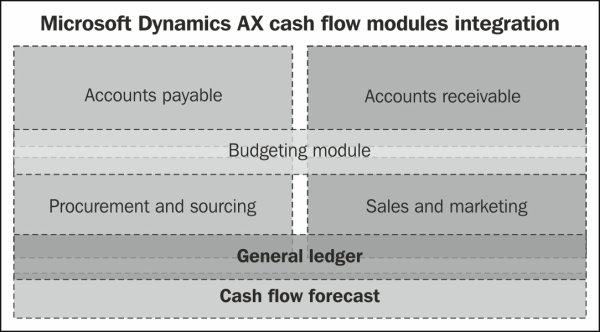Cash flow management is a tool that predicts a company's future cash requirements. Cash flow management mainly covers the cash out and cash in events. Cash out is generated from the company's expenditure against the goods or services purchased, whereas cash in is generated from the company's revenue against the sale of goods or services. It gives the company's management a vision of the cash position in order to efficiently manage vendor payments in a specific period, and also the customer collections during the same period to protect the company's cash situation. In this chapter, we will cover the following topics:
- Understanding cash flow integration with other modules
- Exploring cash flow forecast configuration
- Working with cash flow transactions
- Forecasting cash flow by currency requirements
- Forecasting the main account's cash flow
The integrated modules of cash flow management are Accounts payable, Accounts receivable, and General ledger. The Accounts payable module manages the vendor payments process, the Accounts receivable module manages the customer collections process, and the General ledger module identifies the cash and cash-equivalent accounts. The following figure shows the integration of the cash flow modules:

The modules that are integrated in cash flow forecast management are divided into the following groups:
- Vendor expenditure management has the following elements:
- Customer collections management has the following components:
- Accounts receivable: This identifies the customers' terms of payment, settlement periods, customers' posting profiles, accounts used for customer settlement, and customer invoice transaction execution
- Sales and marketing: This identifies the transactional execution of customer sales orders, issuances, and invoicing
- Budgeting: This identifies the budget distributions based on specific time intervals (years, months, and days)
- General ledger: This identifies the cash and cash-equivalent accounts that represent the liquidity account
- Cash flow forecast: This represents the cash flow position for purchase and sales order transactions
With the Microsoft Dynamics AX consultant, the implementation of cash flow forecast management is a mutual effort between the controller, accounting manager, treasury, budgeting, procurement, and sales.
